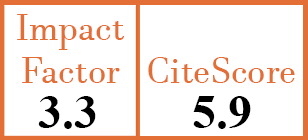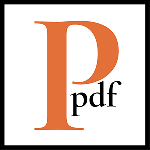Full Papers
Clinical significance of serum IgE/IgG4 ratio in patients with IgG4-related disease
O.C. Kwon1, Y.-B. Park2, K.H. Park3, S.-W. Lee4
- Division of Rheumatology, Department of Internal Medicine, Gangnam Severance Hospital, Yonsei University College of Medicine, Seoul, Republic of Korea.
- Division of Rheumatology, Department of Internal Medicine, Severance Hospital, Yonsei University College of Medicine, Seoul; and Institute for Immunology and Immunological Diseases, Yonsei University College of Medicine, Seoul, Republic of Korea.
- Division of Allergy and Immunology, Department of Internal Medicine, Yonsei University College of Medicine, Seoul, Republic of Korea. white182@yuhs.ac
- Division of Rheumatology, Department of Internal Medicine, Severance Hospital, Yonsei University College of Medicine, Seoul; and Institute for Immunology and Immunological Diseases, Yonsei University College of Medicine, Seoul, Republic of Korea. sangwonlee@yuhs.ac
CER19174
Full Papers
Received: 01/08/2025
Accepted : 13/10/2025
In Press: 29/10/2025
Abstract
OBJECTIVES:
Serum immunoglobulin E (IgE) levels are frequently elevated in patients with IgG4-related disease (IgG4-RD). This study aimed to evaluate the clinical relevance of serum IgE/IgG4 ratio in relation to disease activity and clinical outcomes in patients with IgG4-RD.
METHODS:
We retrospectively analysed 32 patients with newly diagnosed IgG4-RD who had data on both serum IgG4 and IgE levels. Disease activity was assessed using the IgG4-RD responder index (RI), and clinical outcome was assessed by remission status at 1 year, defined by an IgG4-RD RI score of 0. Spearman’s correlation coefficients were used to evaluate the correlations between serum IgG4, IgE, and the IgE/IgG4 ratio with IgG4-RD RI. Multivariable logistic regression analysis was performed to assess the association between the IgE/IgG4 ratio and remission at 1 year.
RESULTS:
The median serum levels of IgG4, IgE, and the IgE/IgG4 ratio were 5090.0 (1985.0–14075.0) mg/L, 312.5 (93.9–791.8) kU/L, and 0.052 (0.015–0.104), respectively. Serum IgG4 levels significantly correlated with IgG4-RD RI (rho=0.628, p<0.001), whereas IgE levels (rho=0.210, p=0.249), and the IgE/IgG4 ratio (rho=-0.251, p=0.165) did not. A higher IgE/IgG4 ratio was independently associated with remission at 1 year (adjusted odds ratio=1.052, 95% confidence interval=1.008–1.099, p=0.021), while absolute IgG4 or IgE levels were not.
CONCLUSIONS:
Although the serum IgE/IgG4 ratio did not correlate with baseline disease activity, it was independently associated with remission at 1 year. This finding suggests its role as a prognostic biomarker for remission in IgG4-RD, capturing immunologic features not reflected by absolute IgG4 or IgE levels.


